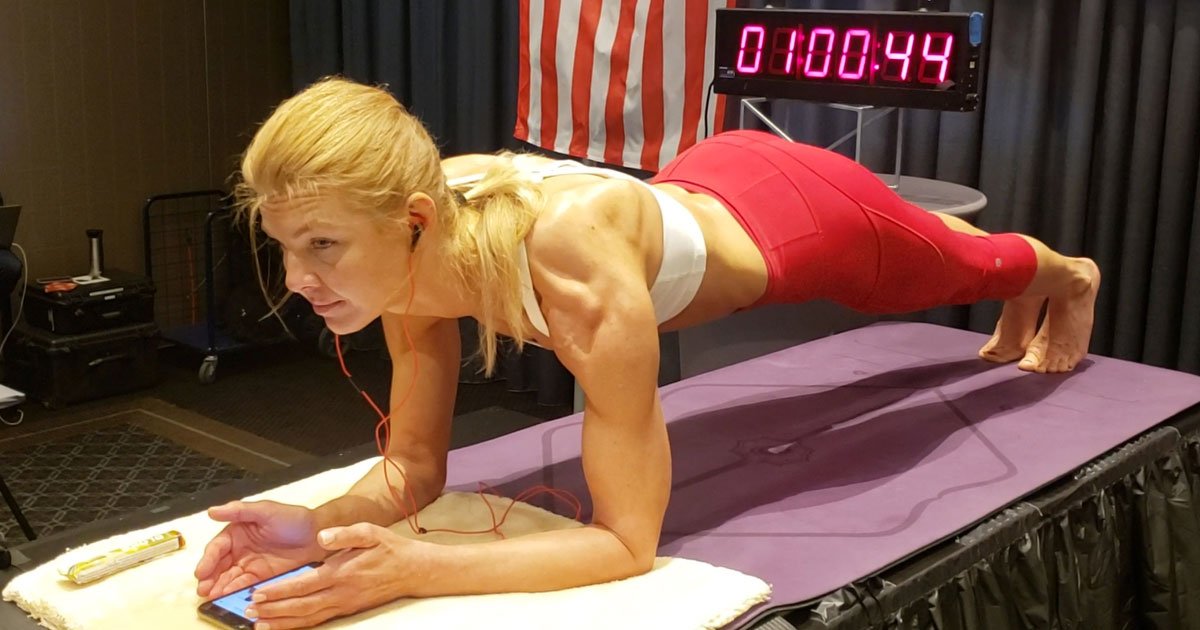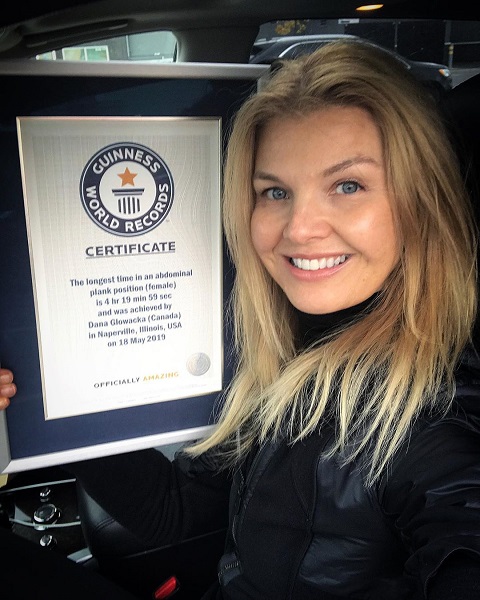Planking is one of those exercises which a lot of people can’t do for very long especially when they are new to working out.
But a Canadian athlete Dana Glowacka is different from others and her version of extreme planking remains a little longer.
Dana just set a new world record for holding the longest plan as she planked for 4 hours, 19 minutes, and 55 seconds at the 1st International Plank Training Conference in Illinois in May 2019, in front of a group of Guinness World Record officials.
“I’m so grateful,” Glowacka wrote in her Instagram post following the event.”Truly, if you put the whole of you in what you believe, you gonna make it!”
Holding a plank for a minute is tough enough, but four hours definitely takes some serious skill-honing. “Planking is safe as long as the body is in the proper alignment and the muscles are being used efficiently,” holistic health coach, certified personal trainer, and author of Let Your Fears Make You Fierce, Koya Webb, tells Health.
For plank noobs, “proper alignment” means a neutral head position and hips in line with, or higher than, the shoulders. “Proper plank form means keeping your core and quads tight and your hips lifted. Your feet and arms should be shoulder-width apart, although some people like to bring the feet together,” Webb explains.
A progressive training program like Dana, who practiced for years before her official record-breaking attempt needed to plank to Dana’s level.
Marcus Mitchell, a certified personal trainer and co-founder of New York City-based Modern Might, tells Health. “A program that starts with a short planking time and consistently works you up to a plank for hours is probably safe. The body is unbelievably adaptable when trained properly.
”
He advises aiming to “create tension with good form” for shorter periods of time. “When a plank is done properly, your body should be fairly exhausted within 30 to 60 seconds,” he adds.
“You should have a stronger core than most people, but it’s not the most functional way of training—and certainly not the most time efficient.”
There is a risk of injury if you don’t plank properly. “If you feel any neck or lower back pain while planking, this could indicate weakness in the upper or lower spine,” Webb says.
Webb suggests incorporating a few other exercises into your workout if you want to improve your plank hold time. You need to do sit-ups, crunches, hip-ups (bridge pulses), push-ups (any variation works), and hollow body holds. “This combination of exercises strengthens the different muscles you use when you plank,” she says.
[rumble video_id=vek79 domain_id=u7nb2]





